Astronomy
-
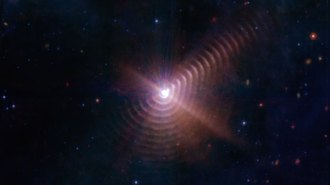 Astronomy
AstronomyFor the first time, astronomers saw dust in space being pushed by starlight
Images collected over 16 years reveal that dust expelled from a well-known binary star system is hurried on its way by light from those stars.
-
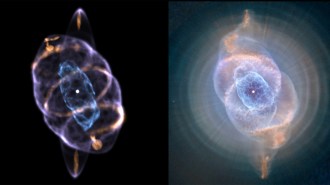 Astronomy
AstronomyA 3-D model of the Cat’s Eye nebula shows rings sculpted by jets
The Cat’s Eye is one of the most complex nebulae known. A 3-D reconstruction reveals the source of some of that complexity.
-
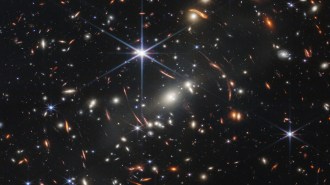 Astronomy
AstronomyThe James Webb Space Telescope spied the earliest born stars yet seen
The stars, found in the first released science image from the James Webb Space Telescope, probably winked into existence about 13 billion years ago.
-
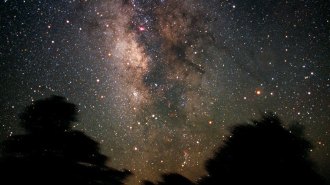 Astronomy
AstronomyA protogalaxy in the Milky Way may be our galaxy’s original nucleus
Millions of ancient stars spanning about 18,000 light-years at the Milky Way’s heart are the kernel around which the galaxy grew, researchers say.
By Ken Croswell -
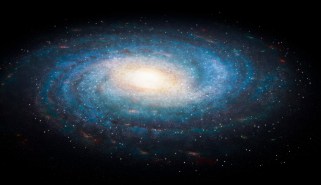 Planetary Science
Planetary SciencePassing through the Milky Way’s arms may have helped form Earth’s solid ground
Barrages of comets stirred up by the early solar system’s journey around the center of the galaxy could explain the timing of ancient rock formation.
-
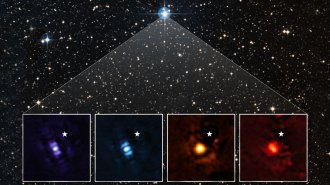 Astronomy
AstronomyHere’s the James Webb telescope’s first direct image of an exoplanet
Along with spying its first exoplanet, the James Webb telescope got its first direct spectrum of an object orbiting a star in another solar system.
-
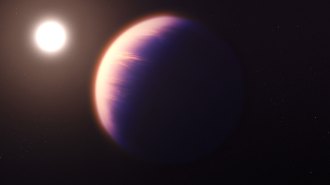 Astronomy
AstronomyThe James Webb telescope spotted CO2 in an exoplanet’s atmosphere
The first definitive detection of the gas on a world in another solar system paves the way for detections in planets that are more Earthlike.
-
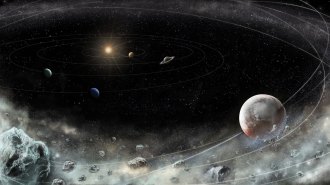 Astronomy
AstronomyThe discovery of the Kuiper Belt revamped our view of the solar system
Thirty years ago, astronomers found the Kuiper Belt, a region of space home to Pluto and other icy worlds that helped show how the solar system evolved.
-
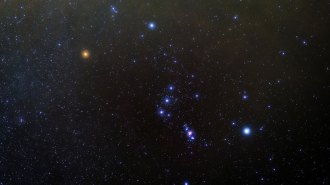 Space
SpaceOver time, Betelgeuse changed color. Now it’s also lost its rhythm
A recent upset to the star’s variability and ancient records that describe the red star as yellow tell a tale of a star that is no stranger to change.
-
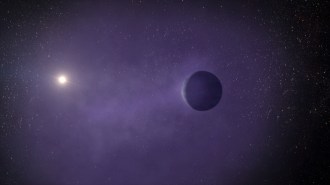 Astronomy
AstronomyMini-Neptunes may become super-Earths as the exoplanets lose their atmospheres
Starlight is eroding the atmospheres of a handful of gassy exoplanets that are a bit smaller than Neptune, gradually exposing the rocky cores within.
By Liz Kruesi -
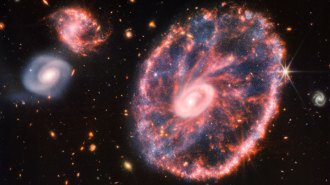 Astronomy
AstronomyA new James Webb telescope image reveals a galactic collision’s aftermath
Bright and dusty spokes of star formation connect the Cartwheel Galaxy’s inner and outer rings in a new image from NASA’s James Webb Space Telescope.
-
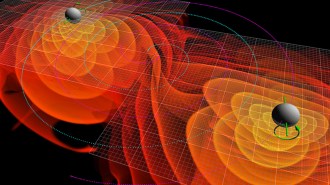 Physics
PhysicsTwo black holes merged despite being born far apart in space
A closer look at gravitational wave data reveals 10 overlooked mergers, including one between black holes that probably found each other late in life.